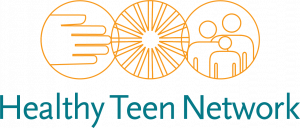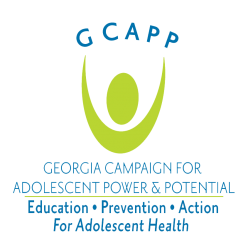What does (and doesn’t) motivate people to listen to messages about the value of sex education? In this mini-course, practice building effective messages by working through real-world scenarios using evidence-based communication techniques.
Training Hub
The Sex Education Collaborative Training Hub lists trainings for sex educators, facilitators, and other professionals on best practices for sharing important information with clients and the public. From teaching anatomy inclusively to effectively addressing bias in the classroom to addressing racial justice and equity in sex education, the Training Hub includes trainings, technical assistance, and policy support from state, regional, and national leaders in the field of sex education.
Please note: The Training Hub includes both in-person and online professional trainings. If you see a training you are interested in and it isn’t listed as virtual, please reach out directly to any of our members to find out what's possible!
Trainings Offered by State-Based and National Organizations
Displaying results 61 - 65 of 137Building Support for Sex Education in Schools
- Indicator 1 (K-12): Describe three health (e.g. physical, social and/or emotional) and/or academic benefits of sex education for young people
Puberty 101: Teaching about the Birds and the Bees
Puberty is a time of physical, emotional, and social changes that can cause some young people great angst. Equipping students with the knowledge and skills about these changes can help them navigate through this challenging time and emerge strong, happy, and healthy. This workshop will provide you with a number of lessons to teach students about the changes of puberty, and will help you improve your skills on addressing this sensitive topic in an inclusive way. This workshop can be tailored to meet the specific needs of your group, school, or agency. All content is aligned with the National Sexuality Education Standards, the National Teacher Preparation Standards for Sexuality Education, and the Professional Learning Standards for Sex Education.
- Indicator 2 (K-12): Demonstrate three student-centered instructional approaches that support a variety of learning styles. (S)
- Indicator 2 (K-12): List three physical, three social, and three emotional changes that occur during puberty.
- Indicator 3 (K-12): Identify three practices that students can adopt for maintaining healthy habits beginning during puberty.
Virtual PD - Increasing Personal Comfort When Teaching Sex Ed
Virtual Professional Development is a simulated classroom where teachers can practice teaching student avatars using short scenarios and support from an instructional coach, so they can quickly learn and master the skills they most need to be effective. With upper elementary, middle and high school classrooms, Virtual PD has scenarios for teachers of all grade levels across a wide range of topics aligned with the Professional Learning Standards for Sex Education (PLSSE). You can watch the video here to learn more about Virtual PD.
Using the Virtual Professional Development simulated classroom, the educator will practice Increasing Personal Comfort When Teaching Sex Ed with the student avatars. In this VPD scenario, the participant will conduct an activity about the physical changes of puberty with an established classroom community. In this simulation with the five students, the educator will ask students to engage in a think-pair-share activity to brainstorm three physical changes of puberty and then have both small groups report back. The participant will need to demonstrate personal comfort when leading this discussion with students.
- Indicator 1 (K-12): Demonstrate the ability to build rapport with students. (S)
Virtual PD - Creating LBGQ Inclusive Classrooms
Virtual Professional Development is a simulated classroom where teachers can practice teaching student avatars using short scenarios and support from an instructional coach, so they can quickly learn and master the skills they most need to be effective. With upper elementary, middle and high school classrooms, Virtual PD has scenarios for teachers of all grade levels across a wide range of topics aligned with the Professional Learning Standards for Sex Education (PLSSE). You can watch the video here to learn more about Virtual PD.
Using the Virtual Professional Development simulated classroom, the educator will practice Creating LGBQ Inclusive Classrooms with the student avatars. In this VPD scenario, the participant will need to demonstrate the use of inclusive and affirming language and the ability to intervene effectively in homophobic and other bullying comments and actions. The educator will introduce the topic of STDs and ask each student to share one behavior they have heard that can place someone at risk for getting an STD. This scenario can be used with high school or middle school students.
- Indicator 4 (K-12): Demonstrate the use of inclusive and affirming language. (S)
- Indicator 5 (K-12): Demonstrate the ability to intervene effectively in homophobic and other bullying comments and actions. (S)
Healthy Teen Network customizes techincal assistance and support to meet your unique needs.
Areas of expertise span a wide range of topics across adolescent sexual and reproductive health, evidence-based approaches, curricula, working with diverse youth, training adult professionals, innovation and research, human-centered design, advocacy and public policy, strategic planning, sustainability, and more.
Additional Trainings offered by out-of-state organizations
- ‹ previous
- 32 of 49
- next ›
Minors Rights in Georgia
Participants will be able to describe the rights of minors in Georgia as related to confidentiality, informed consent, contraceptive care and counseling, abortion, STI testing, HIV/AIDS testing, substance abuse, and emergency care. We will provide youth-friendly resources for accessing reproductive health needs.
- Indicator 6 (6-12): Identify three federal and/or state laws that impact young peoples’ access to effective reproductive and sexual health care (e.g. age of consent for services, confidential access to health care services, and access to condoms)



